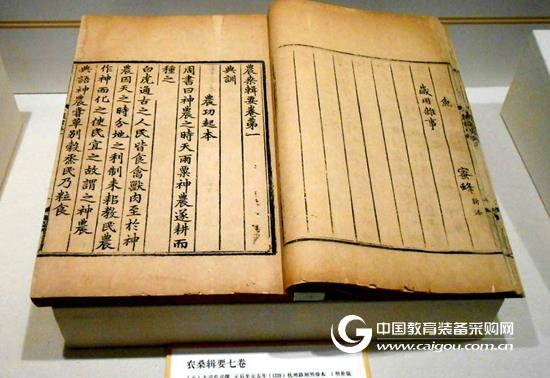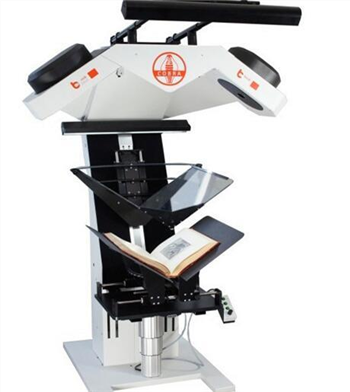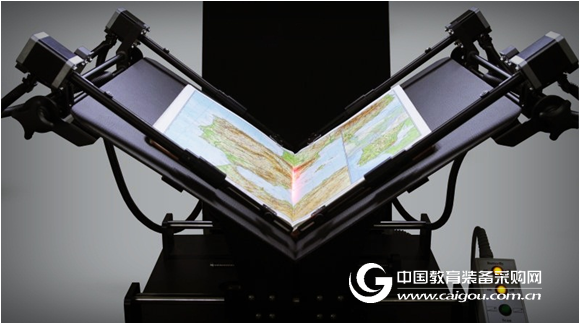The ancient books and magazines scanners have made great achievements in the protection of ancient books.
The "China Ancient Books Protection Plan" is the first national ancient book protection project initiated by the state in the history of New China. In the past ten years, the project has been focusing on the general principles of “protection first, rescue first, rational use, and strengthening managementâ€, and has made unremitting efforts in the census of ancient books, document restoration, library construction and personnel training, and achieved remarkable results.

First, a relatively perfect coordination mechanism for the protection of ancient books has been formed. The project has established an inter-ministerial joint meeting of the National Ancient Books Protection Work, which is jointly led by the Ministry of Culture and the National Development and Reform Commission. It is responsible for the organization, coordination, guidance, promotion and supervision of the protection of ancient books in the country; The Ancient Books Protection Center is responsible for the National Ancient Books Protection Business Guidance Center, Training Center and Research Center; the National Expert Committee for the Protection of Ancient Books is established to provide intellectual support for the implementation of the project; the Chinese Ancient Books Protection Association is established to mobilize social forces and introduce private capital from the bottom. And participate in the protection of ancient books. All provinces, districts and municipalities across the country have also established provincial joint conferences on the protection of ancient books, provincial ancient books protection centers and expert committees. A party led by the party and the state, all kinds of ancient books and institutions and ancient books workers at all levels coordinate and cooperate, and the national ancient book protection work pattern supported and participated by all walks of life is gradually improved, providing a collective effort to promote the protection of ancient books. A solid organizational guarantee.
The second is to carry out a nationwide survey of the preservation of ancient books. Since 2011, the National Ancient Book Protection Center has comprehensively promoted the registration of ancient books. By the end of 2016, it has completed the census registration of 1,218 ancient books collection units nationwide. The census registration data reached more than 2 million, and passed the “National Ancient Books Census Registration Basic Databaseâ€. More than 400,000 publicly released data. It published a total of 57 volumes of 30 national census registration catalogues of 119 ancient books collection units, and initiated the compilation of the Chinese Ancient Books Headquarters, Tianjin Volume, and Hydrographic Volume. The census registration of ancient books in the frontier ethnic areas such as Tibet and Xinjiang has made breakthrough progress. In 2015, the famous religious temples such as the Potala Palace, Norbulingka, Jokhang Temple, Drepung Monastery, Sakya Monastery and Sera Monastery launched a comprehensive survey of ancient books. Registration.
The third is to establish a hierarchical protection system for ancient books. Establish a list of precious ancient books at the national and local levels, organize the formulation of national standards for the classification of ancient books, and carry out focused and targeted grading preservation and protection of the ancient books of the world with varying volumes and varying degrees of damage. By the end of 2016, the State Council has successively announced five batches of the “National Precious Ancient Books Listâ€, which included 12,274 ancient books. In the process of reviewing the list, the Peking University Han Bamboo Slips and the Lushun Museum have collected the tenth century Dunhuang manuscript "The Sixth Mantra", the National Library, the Tibetan Jiajing Neiguan, the deputy-writing of the lake, the "Yongle Dadian", the Tibetan Museum, the Tibetan Yuan New varieties or new versions of some precious ancient books, such as the "Quantification Theory", have been discovered one after another.
The fourth is to improve the storage conditions of key ancient books and warehouses. Named the "National Ancient Books Key Protection Unit", and promoted the construction or reconstruction of ancient books and warehouses according to the national standards such as the "Basic Requirements for Library Ancient Books Collection" and improved the management system of the warehouse. By the end of 2016, the State Council had named five batches of 180 “National Ancient Books Key Protected Unitsâ€, which drove more than 1,000 ancient books collection units across the country to improve the conditions of the warehouses to varying degrees, and equipped with special facilities for the protection of ancient books, so that more than 20 million ancient books were properly prepared. protection. Some ancient depository units have innovatively explored the multi-modality of the construction of ancient books, such as Zhejiang Province, which has a small number of grassroots units with a small amount of ancient books, and has formulated a list of guidelines for the construction of small micro-cabin facilities and a list of minimum equipment, and provided related reform cases. The funds were invested and the original warehouse was transformed, so that 91% of the ancient books in the province were under the protection of good warehouses.
The fifth is to complete the rescue repair of a number of precious ancient books. It has set up 12 “National Ancient Books Restoration Centers†throughout the country, with a total area of ​​about 7,250 square meters. It has promoted 247 professional ancient books repairing rooms at all levels of the country, with a total area of ​​more than 16,000 square meters. The National Library Ancient Books Protection Laboratory, which was completed in 2007, has reached or is close to the international advanced level in the research of ancient books, ancient books, ancient books and warehouses, and the characteristics of ancient books and materials, and has been recognized as an ancient book. Key Laboratory of the Ministry of Science, Technology and Culture. The National Ancient Books Restoration Center has fully utilized the functions of radiation belts, organized large-scale ancient books restoration projects such as the “Tianlu Linyi†Qing Palace and the national precious ancient books of Shanxi Province, and has repaired more than 2.5 million ancient books.
Sixth is to cultivate a team of ancient books protection professionals. The project regards the construction of professional talent team as the primary task, and explores a training base, colleges and universities, and the “three in one†of the ancient books to protect the talents of innovative training, and establishes 12 national ancient books protection talent training bases and one national level. The Ancient Books Restoration Skills Training Center (with 23 national ancient books repairing art training institutes), held 165 training courses for ancient books protection, trained more than 8,000 students, covered more than 1,800 ancient books collection units across the country, and cooperated with many colleges and universities. Cultivate a master's degree in ancient books protection, establish a research institute for ancient books protection, and train a group of professionals with high level of protection of ancient books. According to incomplete statistics, as of the end of the "Twelfth Five-Year Plan", the number of ancient books in the ancient books collection units has increased from less than 1,000 to tens of thousands before 2007, and the number of ancient restoration professionals has increased from less than 100 to more than 1,000. Du Weisheng, a tutor at the National Library Training Center, has grown into a leading expert in the field of domestic rehabilitation in the study activities, and was named as the representative inheritor of the fourth batch of national intangible cultural heritage projects.
The BOOK2NET design team listens carefully to the needs of feedback from many libraries and translates the requirements into scanners that are best suited to the digitalization of the library's precious ancient books. The book2net Cobra is equipped with the latest sensor technology and its high-precision system, which is suitable for the special protection requirements of all precious historical manuscripts, books and documents, while ensuring flexibility and ease of operation.
Highest productivity and efficiency.

Book2netCobra's highest productivity and efficiency
High-quality optics enable book2net Cobra to achieve an unparalleled combination of quality, and two high-resolution area sensors are used in parallel, allowing valuable, precious ancient books to be restored with high quality without any damage. Especially for special inks and colors, especially for gold coatings and gold-plated layers, the book2net Cobra is equipped with glare - an additional lighting system and a special structure for the unshaded capture, integration, installation and external control of The scanning process provides a stable scanning temperature for perfect reproduction of the scanned color.

Garden Edging,Lawn Edging,Corten Steel Garden Edging,Flower Bed Edging
Henan Jinbailai Industrial Co.,Ltd , https://www.designsteelarts.com